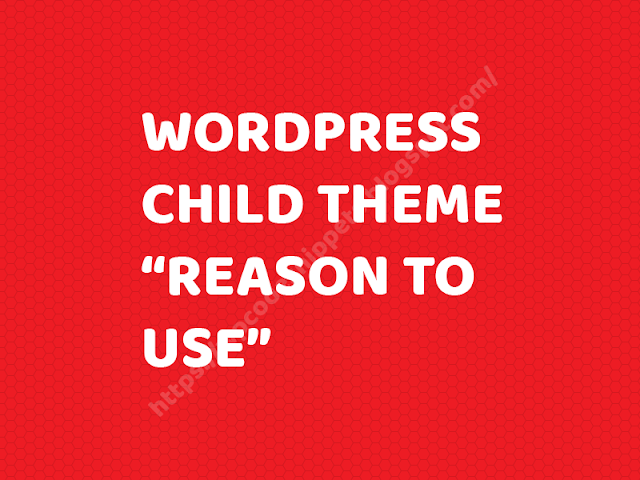WordPress Child Theme - Why It's Essential
If you're a WordPress user and you've delved into theme customization or have worked with WordPress themes extensively, you've likely come across the term "child theme." But what exactly is a child theme, and why should you consider using one? In this blog post, we'll explore the concept of WordPress child themes and delve into the compelling reasons why you should incorporate them into your WordPress development workflow.
What is a WordPress Child Theme?
A WordPress child theme is a theme that inherits the functionality and styling of another theme known as the "parent theme." However, it allows you to make modifications and customizations to the parent theme without altering its core code. This is achieved through the creation of a separate child theme directory containing specific files that override or extend the parent theme's templates, styles, and functions.
Why Should You Use a WordPress Child Theme?
1. Preservation of Customizations
When you customize a WordPress theme directly, your changes may be overwritten when the theme receives updates. This means that any customizations you've made, such as modifying the header, footer, or styling, can be lost. Child themes act as a protective layer, allowing you to keep your customizations intact even when the parent theme updates.
2. Improved Maintenance
WordPress developers frequently release updates to address security vulnerabilities, improve performance, and introduce new features. By using a child theme, you can apply these updates to the parent theme without affecting your customizations. This ensures that your website remains secure and up-to-date.
3. Easier Customization
Child themes make it easier to customize your website's appearance and functionality. You can create custom templates, add new styles, and insert additional functions without altering the parent theme's core files. This simplifies the customization process and provides greater flexibility in tailoring your website to your specific needs.
4. Code Organization
Child themes promote clean and organized code. Since your customizations are isolated in the child theme's directory, it's easier to manage and understand your website's codebase. This can be particularly beneficial when working on larger and more complex projects.
5. Community Contributions
WordPress has a vibrant community of developers who create and share child themes. By using a child theme, you can take advantage of these ready-made solutions to enhance your website's design and functionality. It's a time-saving way to leverage the collective knowledge of the WordPress community.
How to Create a WordPress Child Theme
Creating a child theme is relatively straightforward, and there are numerous tutorials and resources available online to guide you through the process. In general, you'll need to:
- Create a new directory for your child theme in the WordPress themes directory.
- Create a stylesheet (style.css) for your child theme, specifying the parent theme as the template.
- Add any additional files you wish to customize, such as template files or functions.php for custom functions.
Once your child theme is set up, you can activate it from the WordPress dashboard, and your customizations will take effect.
In conclusion, WordPress child themes are an essential tool for anyone looking to customize their WordPress website while maintaining code integrity and simplifying the update process. They provide a safe and efficient way to make your website truly unique without compromising on security or theme updates. Whether you're a novice or an experienced developer, incorporating child themes into your WordPress workflow is a wise decision that can save you time, effort, and headaches in the long run.



Comments
Post a Comment